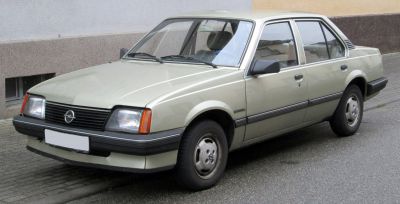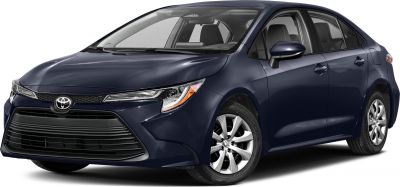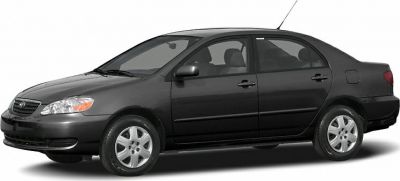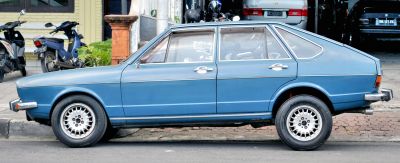 1982 BMW 3 Series Sedan (E30) Dimensions, Size & Specs
1982 BMW 3 Series Sedan (E30) Dimensions, Size & SpecsMeasurements of the 1982 BMW 3 Series Sedan, engineered for optimal performance and comfort
| Dimensions | |
|---|---|
| Length: | 4325 mm170.3 in14.2 ft |
| Width: | 1645 mm64.8 in5.4 ft |
| Height: | 1380 mm54.3 in4.5 ft |
| Ground Clearance: | 125-140 mm4.9-5.5 in0.4-0.5 ft |
| Trunk Capacity: | 404-425 liter14.3-15.0 cu ft |
| Weight Specifications | |
| Curb Weight: | 1010-1235 kg2227-2723 lbs |
| Maximal permitted Weight: | 1460-1720 kg3219-3792 lbs |
| Roof Load: | 75 kg165 lbs |
| Tire Specifications | |
| Rims Sizes: | 14-inch rims:
|
| Tire Sizes: |
|
The BMW 3 Series Sedan (E30), produced from 1982 to 1987, is a classic compact executive car that set standards with its balanced dimensions and solid build quality. Measuring 4325 mm (170.3 inches) in length, 1645 mm (64.8 inches) in width, and 1380 mm (54.3 inches) in height, the E30 offers a sleek yet practical profile suited for urban and highway driving. Its weight varies depending on configuration, ranging from a curb weight of 1010 kg to 1235 kg (2227 to 2723 lbs), with maximum weights between 1460 kg and 1720 kg (3219 to 3792 lbs), making it a lightweight contender in its class and contributing to agile handling and fuel efficiency. The luggage capacity spans from 404 to 425 liters (14.3 to 15 cubic feet), providing ample space for everyday use or longer trips. The vehicle’s ground clearance ranges from 125 mm to 140 mm (4.9 to 5.5 inches), balancing sporty driving dynamics with practicality for varied road conditions. Equipped with rim sizes between 14x5.5J and 14x6J, the E30 typically runs on tires sized from 175/70 R14 up to 195/65 VR14, which underscores its emphasis on ride comfort and grip. With a maximum roof load capacity of 75 kg (165 lbs), the BMW E30 remains versatile for carrying additional cargo such as roof boxes or sports equipment. Overall, the BMW 3 Series E30 stands out as a well-proportioned and efficiently sized sedan that blends style, performance, and everyday usability, making it a popular choice among enthusiasts and practical drivers alike.
Discover the standout features that make the 1982 BMW 3 Series Sedan a leader in its class
Have a question? Please check our knowledgebase first.
The BMW 3 Series Sedan (E30) has a length of 4325 mm (approximately 170.3 inches), a width of 1645 mm (about 64.8 inches), and a height of 1380 mm (approximately 54.3 inches). These compact dimensions underline its nimble and sporty characteristics typical of the early 80s design, making it an agile car suited for urban and spirited driving.
The curb weight of the BMW E30 varies between 1010 kg and 1235 kg (2227 to 2723 lbs), depending on the specific model and equipment. Its maximum gross weight ranges from 1460 kg to 1720 kg (3219 to 3794 lbs). This relatively light weight contributes to the car's balanced handling and efficient performance.
The E30 sedan offers a luggage capacity ranging from 404 liters to 425 liters (approximately 14.3 to 15.0 cubic feet). This capacity is fairly generous for a compact sedan of its era, allowing for practical storage of groceries, luggage, or daily essentials, making it suitable for both daily commutes and longer trips.
The ride height or ground clearance for the E30 ranges between 125 mm and 140 mm (around 4.9 to 5.5 inches). This clearance is typical for compact sedans designed for paved roads, providing a balance between sporty handling and sufficient clearance for urban and suburban driving conditions, though it may require caution on rough or uneven surfaces.
The BMW E30 came equipped with rim sizes of 14 inches in various widths including 6J, 5.5J, and 5.5. Tire sizes compatible with these rims include 175/70 R14, 195/60 R14, 195/65 R14, and 195/65 VR14. These tire options allowed flexibility for both comfort-oriented and more performance-focused driving setups.
Yes, the BMW 3 Series Sedan (E30) fits comfortably into a standard garage. Its length of 4325 mm (170.3 inches) and width of 1645 mm (64.8 inches) are well within the dimensions typical for residential garages worldwide, providing ample room for parking without difficulty or the need for specialized space.
Compared to the BMW E21 (the predecessor to the E30), the E30 is slightly larger and heavier. The E30’s length of 4325 mm is longer than the E21, which measured around 4310 mm. Width and height dimensions remained close, but the E30's curb weight (1010-1235 kg) is generally higher due to added features and improved safety components. These changes contributed to enhanced comfort, better road presence, and improved handling dynamics overall.
The BMW E30 was competitively sized within the compact sedan segment of the 1980s. With its 4325 mm length and 1645 mm width, it was slightly more compact compared to competitors like the Mercedes-Benz 190E but offered sportier handling and lighter weight (1010-1235 kg). Its luggage capacity of over 400 liters was generous for the class, making it a practical yet performance-oriented option in its segment.
The BMW E30 has a roof load capacity of 75 kg (about 165 lbs). This means it can safely support roof racks or cargo carriers within this weight limit, allowing owners to carry additional luggage, sporting equipment, or bicycles. Care should be taken not to exceed this limit as it could negatively affect vehicle stability and safety.
The BMW 3 Series Sedan (E30) is celebrated for its timeless design, combining classic BMW styling cues with improved aerodynamics and modern touches of its era. Known for its balanced rear-wheel-drive dynamics, the E30 offered various engine options delivering responsive performance. It was praised for its solid build quality, driver-focused interior, and pioneering advances in safety and technology that set new standards for compact executive sedans during the 1980s.
Discover similar sized cars.

| Model Year: | 1982 |
|---|---|
| Length: | 4366 mm171.9 in |
| Width: | 1668 mm65.7 in |
| Height: | 1385-1395 mm54.5-54.9 in |

| Model Year: | 2017 |
|---|---|
| Length: | 4400 mm173.2 in |
| Width: | 1695 mm66.7 in |
| Height: | 1460-1485 mm57.5-58.5 in |

| Production: | 2001-2006 |
|---|---|
| Model Year: | 2002 |
| Length: | 4375 mm172.2 in |
| Width: | 1710 mm67.3 in |
| Height: | 1470 mm57.9 in |

| Production: | 2014-2017 |
|---|---|
| Model Year: | 2015 |
| Length: | 4390 mm172.8 in |
| Width: | 1927 mm75.9 in |
| Height: | 1467 mm57.8 in |

| Production: | 1973-1980 |
|---|---|
| Model Year: | 1973 |
| Length: | 4290 mm168.9 in |
| Width: | 1615 mm63.6 in |
| Height: | 1359 mm53.5 in |

| Production: | 2001-2012 |
|---|---|
| Model Year: | 2000 |
| Length: | 4330 mm170.5 in |
| Width: | 1650 mm65.0 in |
| Height: | 1402 mm55.2 in |

| Production: | 2014-2016 |
|---|---|
| Model Year: | 2014 |
| Length: | 4375 mm172.2 in |
| Width: | 1700 mm66.9 in |
| Height: | 1470 mm57.9 in |

| Production: | 2003-present |
|---|---|
| Model Year: | 2004 |
| Length: | 4410 mm173.6 in |
| Width: | 1720 mm67.7 in |
| Height: | 1460 mm57.5 in |
